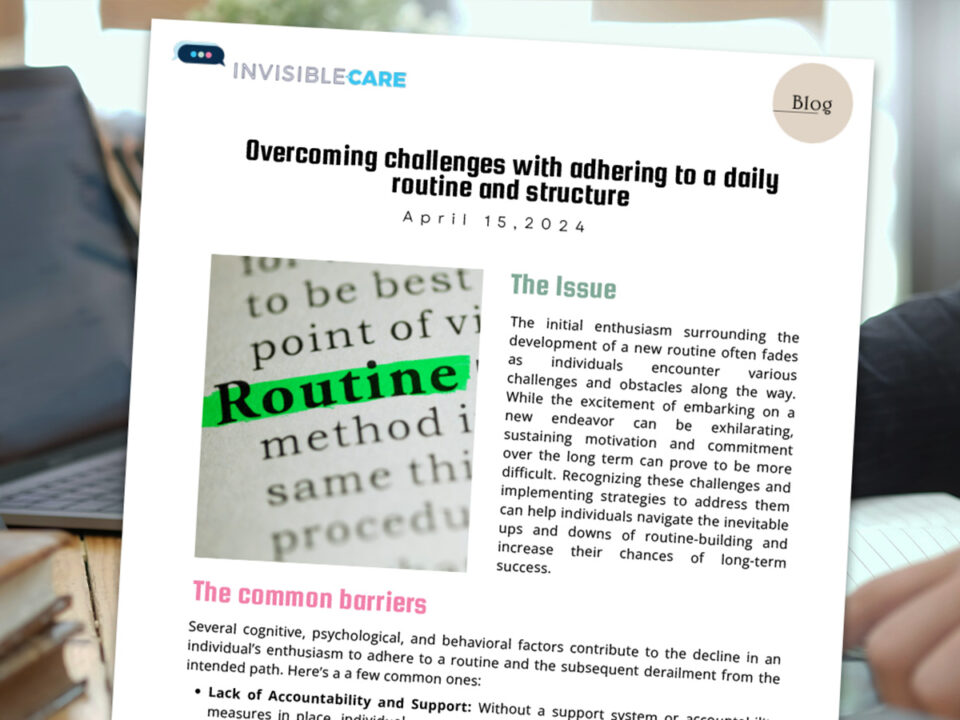
Outside is the Best Side!
April 8, 2021Telehealth is the provision of health care remotely by means of different telecommunication tools, including telephones, smartphones and mobile wireless devices (Dorsey & Topol, 2016).
Over the past few decades, telehealth has become increasingly popular. Telehealth can offer a number of advantages to both patients and care providers:
- Telehealth allows for greater flexibility in treatment times, eliminates the need to travel for services, and reduces delays in receiving services (Johnston, 2019)
- This is especially important for people with mobility challenges, or those who live in remote areas.
Telehealth is a cost-effective alternative to in person health care visits.
- For patients, using telehealth removes the need to travel to receive services, and reduces the time away from home and work (Jong et al, 2019).
- Telehealth can also reduce health care costs through preventing hospitalizations (De San Miguel et al, 2013; O’Conner et al, 2016).
Patients report positive experiences with telehealth.
- Grant et al (2015) examined patients who had been discharged from sub-acute care units in nursing facilities or from the hospital and found that patients receiving a home telemonitoring service were more satisfied with health-related and medical services post-discharge than those receiving usual care over a 6-12-month period.
- Wallisch et al (2019) examined the effectiveness of occupational therapy services delivered through telehealth for families of children with autism to support everyday routine including mealtime and bedtime. They found that the parents reported that telehealth fit easily into their everyday lives, that it fostered a relationship with the occupational therapist, and that it built a sense of empowerment.
Why Invisible-Care?
This research illustrates how telehealth can increase access to care for patients, and that telehealth interventions are effective for patients. The team at Invisible-Care developed services based on this research in order to better serve clients. Invisible-Care harnesses the power of telehealth to provide remote attendant care services through a simple text message. All clients receive a smart tool that is tailored to their needs. This can include promoting for daily activities, medication reminders, and virtual calls to a PSW. Invisible-Care ensures that your client has access to the services that they need 24/7.
References:
De San Miguel, K., Smith, J., & Lewin, G. (2013). Telehealth remote monitoring for community-dwelling older adults with chronic obstructive pulmonary disease. Telemedicine and e-Health, 19(9), 652-657.
Dorsey, E. R., & Topol, E. J. (2016). State of telehealth. New England Journal of Medicine, 375(2), 154-161.
Grant, L. A., Rockwood, T., & Stennes, L. (2015). Client satisfaction with telehealth services in home health care agencies. Journal of telemedicine and telecare, 21(2), 88-92.
Johnston, R. (2019). Caregiver Perspectives on Telehealth: A Service Delivery for Occupational Therapy
O’Connor, M., Asdornwised, U., Dempsey, M. L., Huffenberger, A., Jost, S., Flynn, D., & Norris, A. (2016). Using telehealth to reduce all-cause 30-day hospital readmissions among heart failure patients receiving skilled home health services. Applied clinical informatics, 7(02), 238-247.
Wallisch, A., Little, L., Pope, E., & Dunn, W. (2019). Parent perspectives of an occupational therapy telehealth intervention. International journal of telerehabilitation, 11(1), 15.





